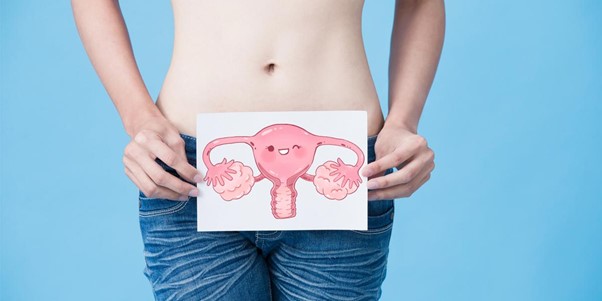In the days immediately before menstruation, a woman’s cervix undergoes natural changes in position, texture, and sensation. Becoming familiar with your own typical premenstrual cervical cycle can help alert you to detect abnormalities or early signs of pregnancy. Here’s a guide to what you may experience in your cervix as your period approaches.
Where is Your Cervix Located?
First, a quick review of cervix anatomy. The cervix is the lower narrow, neck-like portion of the uterus that protrudes into the top of the vaginal canal. It has a small opening called the os, which allows passage between the vagina and uterus.
You can easily feel your cervix by inserting a clean finger inside your vagina towards the back. It feels round and somewhat nose-like. In normal circumstances, the cervix sits deep within the vaginal canal. But its exact position shifts in response to hormonal fluctuations during your menstrual cycle.
Descending Low as Your Period Approaches
In the days immediately leading up to menstruation, your cervix descends down lower into the vaginal canal. As estrogen levels sharply decline premenstrually, the cervix drops closer down towards the vaginal opening.
To assess position, reach your finger up to your cervix. Just before your period, you should be able to reach and touch it more easily compared to other cycle times when it sits higher. This descended position allows menstrual flow to exit the uterus more easily once your period starts.
Increased Firmness and Rigidity
Along with descending, your cervix also becomes very firm and rigid right before your period arrives. This is due to the influence of rising progesterone premenstrually.
Apply gentle pressure against your cervix and you will notice the tissue feels tightly closed and hard. Many describe it as similar to pressing on the tip of your nose. This firmness indicates the opening of your cervix is fully closed and menstrual flow cannot yet pass.
Smooth, Dry Sensation
In addition to firmness, the texture of your cervix transforms leading up to menstruation. Estrogen withdrawal results in a relative drying of cervical mucus. Your cervix may feel smooth, dry, and tightly closed.
This is very different from the softer, lush, wet sensation at mid-cycle when estrogen is high. Take note if your cervix feels unusually moist or rough before your period, as this could require evaluation.
Minimal Discharge or Spotting
Due to low estrogen, your cervical mucus output also declines significantly right before your period starts. You may observe only scant sticky or cloudy discharge in the days immediately before menstrual bleeding begins.
As the uterine lining starts shedding, you may also notice a bit of premenstrual spotting a day or so before your period. Observation of light pink or brownish spotting is common and normal leading up to menses.
Mild Cramping or Sensitivity
Some women experience mild cramping or sensitivity around the cervix and low uterus when touched in the days approaching their period. This is thought to be related to prostaglandin release and uterine contractions.
Unless severe, this mild discomfort is common and not cause for concern. But inform your doctor if you have intense pain associated with your cervix.
Opening of the Cervical Os
Once your period officially starts, the opening of the cervix (os) slowly starts to open. This allows free blood flow through the cervical canal and out of the vagina.
During your period, you may be able to insert the tip of your finger into the cervical os, which should remain tightly closed when not menstruating.
Cyclic Cervical Changes Through Your Menstrual Cycle:
– Menstruation: the cervix is low, firm, and open to facilitate the flow
– Post-Menses: cervix remains low and hard as estrogen is low
– Ovulation: rising estrogen makes cervix ri rise high, soften, and produce creamy mucus
– Luteal Phase: progesterone rises, making the cervix lower, firmer, and drier again
– Premenstrual: cervix descends very low while becoming hard and tightly closed
Cervix Change in Early Pregnancy
During the first trimester, a woman experiences Cervix Change in Early Pregnancy as her body prepares for delivery. The cervix softens, tilts backward, produces more mucus, and starts to slowly shorten and thin out. These cervical changes are normal and happen subtly over several weeks.
Minor spotting may occur. Significant dilation, effacement, or bleeding are not expected this early and could indicate problems. Monitoring cervical length via ultrasound is sometimes done for those at higher preterm birth risk. Overall, the cervical changes that happen in early pregnancy are a normal part of the process in most cases.
Consistency is Key
Keep in mind every woman has a unique cervical landscape. Getting intimately familiar with your own regular cycle patterns is key for noticing when something feels different, like possible early pregnancy.
Try to check your cervical position, feel, and mucus every few days and track changes on a calendar. Over time, you will learn your personal norm and be able to discern deviations.
If you notice anything highly abnormal like heavy bleeding, contact your doctor immediately. Otherwise, consistency is vital for tuning into your cervical cycles. Learn to read this intimate barometer for clues into your gynecological health and fertility.
Related Posts












